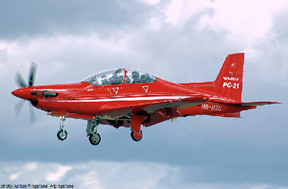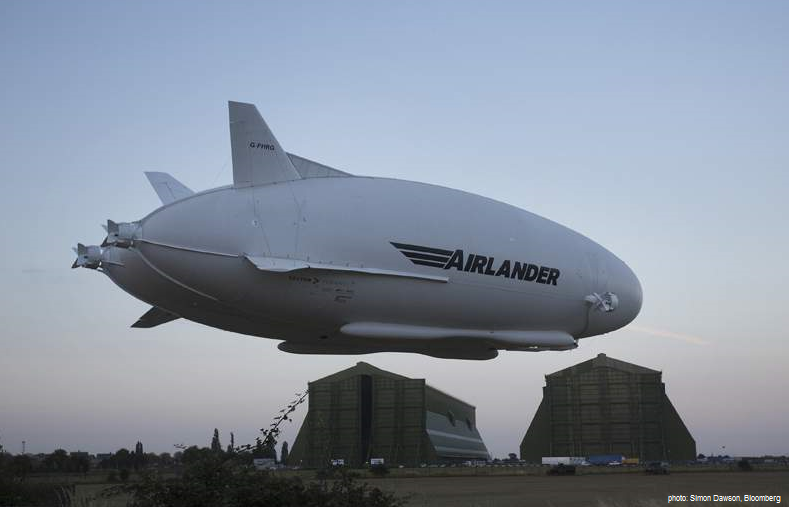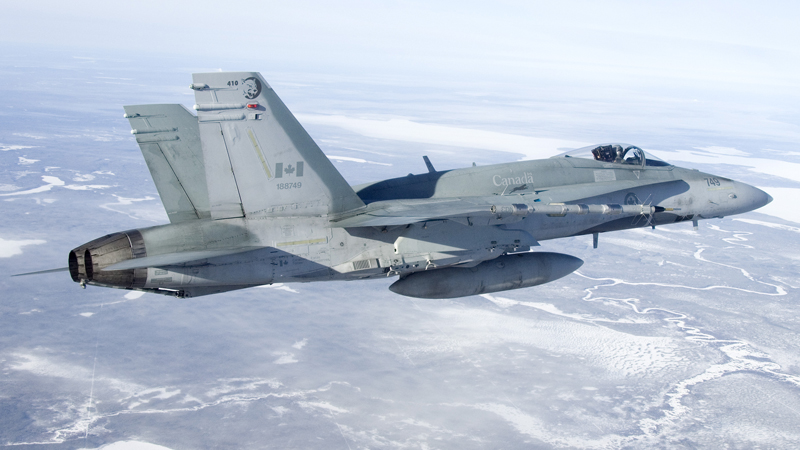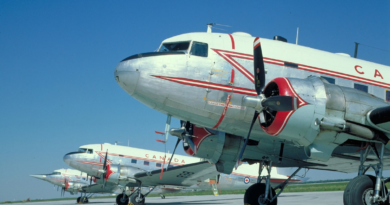Future Aircrew Training for the RCAF
by Murray Lee
I am not sure how many of our readers are confused or do not understand what is happening with respect to aircrew training, specifically fighter pilot training, in the Royal Canadian Air Force (RCAF) these days, but as a retired pilot I was totally confused as to where we stand on the subject. I delved into the subject and can provide you with the latest information available.
With the retirement of the CT155 Hawk advanced trainer aircraft and announcement of the purchase of the F-35 fighter and cessation of lead-in fighter training in Cold Lake, a void existed in fighter pilot training (but not transport and helicopter pilot production). What now: the introduction of FAcT (Future Aircrew Training).
The FAcT program is the RCAF’s next-generation aircrew training program. It combines three separate training programs into one to include training all RCAF Pilots, Air Combat Systems Officers (ACSO) and Airborne Electronic Sensor Operators (AES OP) to Wings Standard. The program will become operational over the coming years.
I felt I should carry out some research on these subjects and let our reading audience know the status of the training program(s). This paper will only focus on fighter pilot training and not include the other aircrew classifications. Helicopter and transport training streams should not be affected by any of the changes of current streams as you will read at the conclusion to this paper.
The Fighter Pilot Side of the Issue
Last year, on 8 March 2024, the RCAF announced that it was officially retiring its fleet of CT155 Hawks. 419 Tactical Fighter Training Squadron (TFTS), in charge of training the RCAF’s fixed wing fighter pilots, held a cessation of operation ceremony in Cold Lake, Alberta. The occasion also marked the beginning a hiatus for the RCAF’s fixed wing fighter training. This situation stemmed from the Air Force’s decision to transition its current CF188 fighter aircraft fleet to the F-35A. As of now, it is yet unknown how long the RCAF will cease its flight training of future fighter pilots.
With the RCAF’s contract with CAE for training its pilots on the Hawk ending in 2024 and the decision to acquire F-35 approved, the time to overhaul the Hawks had finally arrived. The Hawk, originally built to the Hawk 115 standard, is based on a 30 plus years old design. A total of 22 aircraft were initially delivered to the RCAF, mainly flying with 419 Squadron and a handful with 2 Canadian Forces Flying Training School (CFFTS) in Moose Jaw.
For the last 24 years the CT155 Hawk has served with the RCAF as the main advanced trainer aircraft, the last step before student pilots moved onto the CF188 Hornet. A typical training course for a fixed wing fighter pilot would go through four training phases, of which Phases III and IV would be on the CT155. Student pilots would spend a total of 80 flying hours in the CT155, initially at CFFTS Moose Jaw during Phase III training, before moving to 419 TFTS Cold Lake for Phase IV. During Phase III training the fast-jet candidates trained on basic manoeuvres, and upon completion are awarded their Pilot’s Wings. Phase IV involved 49 flying hours of basic fighter training in preparation for conversion to the CF188. Despite the airframe’s outdated origins, the CT155 was fitted with a modern glass cockpit with multifunction displays and a Heads-Up Display that uses symbology similar to that on the CF188, along with basic avionics such as Hands On Throttle And Stick (HOTAS) for preparation on flying fourth generation fighter aircraft.
RCAF now to turn to NATO partners for pilot training
During this hiatus, the RCAF will partner with our allies to train future fighter pilots. One of the first steps of this interim solution is mainly through the Euro-NATO Joint Jet Pilot Training (ENJJPT) program based at Sheppard Air Base, Texas. ENJJPT in the US offers the US Air Force’s (USAF) updated T-38, which program the RCAF have been part of since its beginning in 1981. Currently under the scheme, there will be up to seven students sent to the US.
Future RCAF fighter pilots will also be trained in other NATO countries with similar programs such as the Fighter Lead-in Training (FLT) in Finland and the International Flight Training School (IFTS) in Italy. Finland, another country that operates the F/A-18, will be able to offer RCAF students another variant of the Hawk as part of their program. Plans are to have two RCAF instructors and six students in Italy this year. Notably, IFTS in Italy is also currently training RAF students due to ongoing issues with their training pipeline back home.
The IFTS provides training course on the T-346. The T-346 can provide adequate training for fifth generation aircraft equipped with modern frontline fighter avionics such as Voice Control Inputs (VCI), Helmet Mounted Display (HMD) and a night-vision goggle module for the HMD allowing for night operations training.
419 TFTS Cold Lake is planning to re-activate in the early 2030s but on what aircraft is still unknown. Until then, the squadron will remain administratively active so that it can resume its role as the RCAF’s Tactical Fighter Training Squadron. While no official program has set to replace the CT155, it appears that Boeing is already making a move to pitch its T-7A Red Hawk as the next generation fighter training aircraft for the RCAF. The T-7A won the USAF’s T-X program in 2018 to replace the T-38 fleet of trainer aircraft.
Planning is underway for the CT155 Hawks to move to the Canadian Forces School of Aerospace Technology and Engineering at Canadian Forces Base Borden Ontario where they will support the training of RCAF aircraft technicians.
The 25 Year FAcT Program
In the spring of 2024, theFAcT program was awarded to SkyAlyne Canada Limited Partnership, a joint venture consisting of CAE Inc and KF Aerospace, and is currently in a five-year transition period to become the sole pilot and aircrew training program for the RCAF as the three current separate RCAF training programs conclude and their responsibilities are combined into FAcT. This program will comprise aircrew training services for the RCAF to maintain a multi-purpose and combat capable air force. This 25-year contract, comprising a comprehensive aircrew training program, provides aircraft, simulators, civilian instructors and classroom training systems, as well as other essential services such as aircraft and airfield maintenance, accommodations and food services. The contract value is C$11.2 billion.
Program Description
The FAcT program is in a five-year transition replacing training services currently being provided through two separate contracts. These are:
1. North Atlantic Treaty Organization (NATO) Flying Training in Canada is provided by CAE Military Aviation Training in Moose Jaw, Saskatchewan, through a contract which expires in 2027. The contract includes an additional option year which could extend the services to 2028, and
2. Contracted flying training and support is provided by Allied Wings in Southport, Manitoba. This contract will expire in 2027.
Through the FAcT contract, Canada will acquire over 70 training aircraft in total, split into five fleets. Canada is working with the contractor on ramping up the FAcT program and ensuring the transition from the current programs is progressing smoothly.
The types of aircraft which will be used for pilot training are:
- 19 advanced Airbus H135 helicopters. The H135 being acquired by SkyAlyne for the RCAF will be completed in Canada at the Fort Erie facility.
- 23 Grob G 120TP aircraft.
- 19 state-of-the-art Pilatus PC-21 trainers
- In addition to this initial approximately $1.7 billion sub-contract, CAE is also expected to sign a follow-on order in the near term involving sustainment-related in-service support services.
- Current Beech King Air multi-engine will continue to be used.
- Other aircrew, Airborne Electronic Sensor Operators and Air Combat Systems Officers will be trained on three new Dash 8 aircraft flown by 402 Squadron in Winnipeg.
It is expected that the remaining aircraft needed to finish off the project will be the acquisition of the Hawk replacement at some time in the future.
Follows is some information with respect to the H135, the Grob 120 and the Pilatus PC-21.

H135 Aircraft
The H135 is the ideal rotary-wing training aircraft for the RCAF, with a well-earned reputation with global customers for performance, endurance and cost-effective operations. Featuring twin-engines, Airbus’ most advanced avionics and versatile configurations, the H135 will be a cornerstone of the RCAF rotary-wing fleet for decades to come. The H135 is currently in use by twelve other militaries including in Australia and the United Kingdom.
When operational, Canada’s H135 fleet will be operated jointly with the RCAF and based at 15 Wing’s 3 Canadian Forces Flying Training School, located at Southport Aerospace Centre in Southport, Manitoba.
With more than 400,000 flight hours in a dedicated military training role, the H135 is utilized for basic ab-initio, advanced instrument flight rules and tactical training, with operators including several of Canada’s close military allies such as Australia and the UK. A full spectrum training aircraft, the H135 facilitates the development of core skills while providing twin engines and advanced avionics, allowing easy and safe pilot transition to more complex helicopters in the RCAF’s fleet.

The Grob G 120 TP Trainer
The Grob G 120TP is an upgraded version of the Grob G 120A, currently in use by the Contracted Flying Training and Support (CFTS) program, operated by KF Aerospace and the RCAF for RCAF pilot training. The TP variant features updated avionics, higher performance and a more powerful turboprop engine. The signing of the purchase agreement between SkyAlyne and Grob Aircraft confirms production slots and manufacturing schedule. Factory acceptance of aircraft is expected to begin in August of this year.
The Grob G 120TP is currently in use by numerous other militaries, including Sweden, the United Kingdom and the United States. In total, over 200 Grob G 120TP have been delivered worldwide to date.

The Pilatus PC-21
The Pilatus will be used for advanced fixed-wing flying training, and is an ideal platform for pilots progressing onto larger aircraft types once they have received their wings.
Aircraft deliveries are expected to begin in the second half of 2026. The contract also includes Pilatus supplying various supporting equipment, including mission planning and debriefing systems, and training materials.
Pilatus has supplied approximately 250 PC-21 to several air force customers, including the Swiss Air Force, the Spanish Air Force and the Royal Australian Air Force, amongst others.
Summary and Conclusion
There is a lot of information contained in this overview. I will attempt to summarize what has be discussed as plainly as I can. The hiatus the RCAF finds itself in with respect to fighter pilot training can be expected to last until the end of the decade at which time the aforementioned FAcT programs should reach steady state.
First, we will finish off the current training agreements in the next couple of years. Fast air pilots (read, fighter pilots) will train in the US, Finland and Italy until we can bring home the lead-in fighter training to Cold Lake. The initial F-35 pilots will be trained in the US. None of this is expected to affect those going on to other fixed wing aircraft or helicopter fleets.
Secondly, the press did not publish the entirety of the situation, and spelled the demise of pilot training in Canada. This is not the case and only applies to the pilots who will be trained in future F-35A operations. In addition to supporting its future introduction of the F-35A, Canada’s new training system will be required to train personnel to operate an array of additional incoming types, with orders in place for Airbus Defence & Space A330 tanker/transports, Boeing P-8A Poseidon maritime patrol aircraft, perhaps the Wedgetail airborne early warning and control (AEWC) aircraft, and General Atomics Aeronautical Systems MQ-9B SkyGuardian remotely piloted vehicles.
Lastly, the latest information I have on the training of pilots for the F-35 is this: next year, experienced CF188 pilots will be sent to Luke AFB Arizona for conversion on the USAF F-35. The first four Canadian jets will arrive there in 2026 with four more in 2027 to make up the RCAF contribution to the training carried out at Luke. Over time, more Canadian pilots will convert to the F-35 at Luke AFB and will come home to form the Canadian-based F-35A squadrons. It is not known when the first F-35 will be operating from Cold Lake.
I hope this information is of value to those who are interested in this vital topic for the defence of Canada.
Murray Lee is a retired pilot of the Royal Canadian Air Force.




